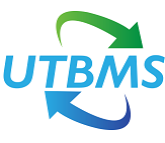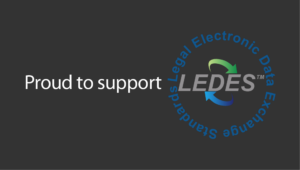The LEDES Oversight Committee IP Subcommittee has proposed new UTBMS codes for Patent Prosecution matters, which have been posted for public comment. The public comment period will close on July 25, 2022.
Discussion
Flaws in the existing set of codes–that this set intends to correct—include:
- Assessment phase codes lifted from the UTBMS litigation set and not relevant to Patent Prosecution
- Unnecessary categories for the various application types, which are more appropriately a project-level designation and not task, and that do not render useful data in the context of a single patent application as it says nothing about the timekeeper’s work on the application.
While there are already UTBMS codes for various types of IP (e.g., Patents and Trademarks) and non-IP work (e.g., Litigation, etc.), the Subcommittee reviewed the UTBMS codes for Patent Prosecution work only. As a result, IP activities such as General Advice and Portfolio Assessment will be handled in future code set proposals.
In the proposed code set, the phases of Patent Prosecution are identified as:
- (Pre-Application) Invention Review & Filing Strategy
- Initial Application and Supplements
- Application Amendment (Corrections or Restrictions)
- Examination
- (Express) Abandonment
- Appeal
- Post-Allowance
- Post-Issuance Maintenance and Re-Issue
- Post-Abandonment
The new code set is based on the phases of Patent Prosecution and not the attributes of a patent application. Therefore, the following attributes of a patent application should be captured separately from timecards and timekeeper narratives:
- Application Type
- Jurisdiction
- Subject matter of filing
- Provisional/Nonprovisional/Child
Validating the New Codes
One of the benefits of the new code set is the potential to validate each code by looking at document activity at the Patent and Trademark Offices. The following section provides an example of how the validation can work.
Proposed USPTO PAIR Validation
One of the main purposes of our code changes is to align them more closely with the USPTO’s PAIR activity descriptors. This will help vendors provide services that were not possible with previous LEDES code sets. For applicants, the vendors can provide a service that flags invoice line items that were invoiced but do not appear to have been performed. For law firms, vendors can provide a service that identifies activity that either was or should have been performed but was not invoiced.
For example, if an invoice contains a line item for preparation and filing a PCT application, the vendor can check PAIR to ensure that an RO/101 was filed and flag the line item if not. Similarly, if a response to an office action was due in a given month, but the response does not appear in the invoice for that month, the vendor can flag the item for the law firm to determine why it was not invoiced.
Since there are over 1,000 PAIR activity descriptors, it was not possible to map our code set directly to the PAIR activity. Instead, we generalized the PAIR activity into categories and created a code for each category. In this document, we list our suggestions of what PAIR activity can be used to validate each invoice line item, however, vendors may choose to add or remove PAIR activity to our suggested list for each category. Because there isn’t a direct mapping between PAIR activity and LEDES codes, it will be impossible to validate line items with complete certainty. However, a vendor can flag certain line items as “suspect” if one of the suggested correlated activities does not appear in PAIR.
To conserve the size of the code set, we rely on the vendors’ ability to identify certain characteristics of each case to generate summary reports. For example, we do not have separate codes for the type of case such as PCT, re-exam, trademark or design application. We rely on the vendors being able to pull that information from the applicant’s IP management system to be able to summarize, for example, all the line items for responses to office actions for design applications, utility applications and re-exams separately.

